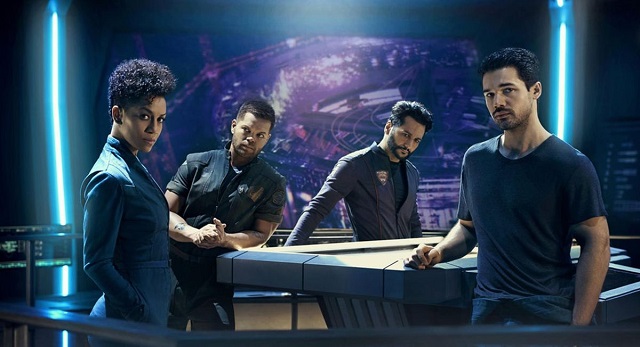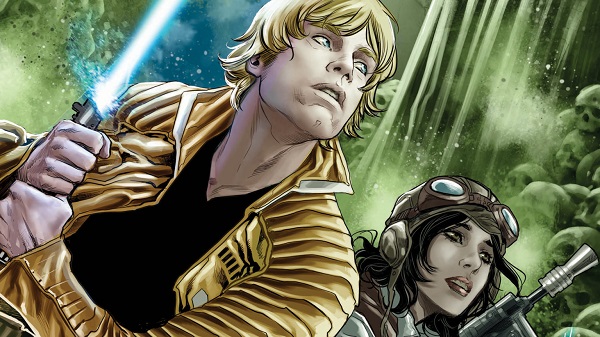
Last week saw the conclusion of the third season of the acclaimed science fiction television series The Expanse. Adapted from the novels by James S.A. Corey (of SWEARHAT fame!), The Expanse follows the crew of the stolen warship Rocinante as they’re pushed and pulled between the far-future solar system’s major political powers and an encroaching and poorly-understood alien presence.
I’m a late convert to the show myself, having streamed the first two seasons on Amazon just in time for the third’s debut this past spring on SyFy—where it would soon be canceled, the bastards. Luckily, Amazon chose to pick up Rocinante‘s reins and continue the series, meaning that in a year or so the show will return to where my journey with it first began. And there’s plenty more to come, if the source material is any indication: the series is slated to conclude with the release of the ninth novel next year, so if the show sticks to a one-book-per-season pace (though that’s varied a bit already), that means six more seasons!
Nine seasons of television are a hell of a time commitment, and for me at least, nine novels even more so—but at the moment I have every intention of sticking around, and once the show is over I plan to spend six months or so reading the novels. What makes The Expanse so compelling, and what qualifies it for precious column inches here on a Star Wars blog? Let’s discuss. Read More




